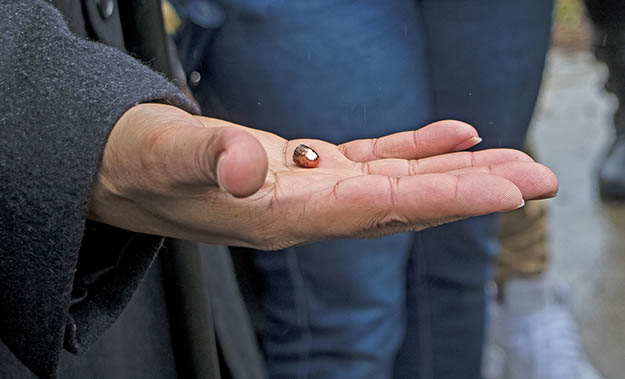Network Analysis Shows Concentration of Gun Violence in Chicago’s Neighborhoods
Most victims connected to other victims through their social networks
Get all our news

A protestor shows a bullet casing found at the scene of a drive-by shooting in Chicago, 2016.
At the same time that Chicago was battling a global health epidemic in 2020, it also experienced a surge in gun violence. After a spike in homicides in 2016, homicides and shootings steadily declined from 2017–19. As of July 29, 2020 however, homicides and non-fatal shootings in Chicago had risen 45% from the same time in 2019. While the levels of gun violence are escalating, gun violence continues to be concentrated in the same communities each year. Prior research also suggests that the victims—and likely the perpetrators—of gun violence concentrate in small identifiable social networks.
This report examines the shootings and homicides that occurred during one of the most severe upticks of gun violence in 2020—the two-week period between Father’s Day and the Fourth of July Weekend, between June 18 and July 5, 2020. By delving more deeply into this short-term period, this report aims to illustrate how understanding the networks in which gun violence occurred during an especially deadly outbreak of violence might inform policy and practice.
The report’s main findings are:
- Homicides in Chicago have decreased steadily since a large spike in 2016. Since 2020, however, homicides have increased, with the largest increase occurring since June.
- The period between Father’s Day and the Fourth of July was especially violent, with around 416 fatal and non-fatal shootings occurring.
- Approximately 51% of the shooting victims during this period (214 victims) occurred within 108 small social networks.
- Most of the victims from this two-week period were connected to other shooting victims, and 29% had at least one victim from the last five years in their immediate social network. Rates in some networks during this time period were even higher.
- Some of the shootings during this period occurred within short time frames of each other. In one network, six shootings occurred within 62 days of each other; in another network, four connected shootings occurred within only 10 days of one another.
- About 70% (149 of the 212) of the victims we identified had some police-identified affiliation with a gang faction.
- Only a small percentage of gang factions were involved in gun violence during this time period, and 58 unique gang factions were associated with these shootings—just 6% of all known factions.
Read the full report here.
Photo credit: Bob Simpson, Flickr.
Published: January 8, 2021.


